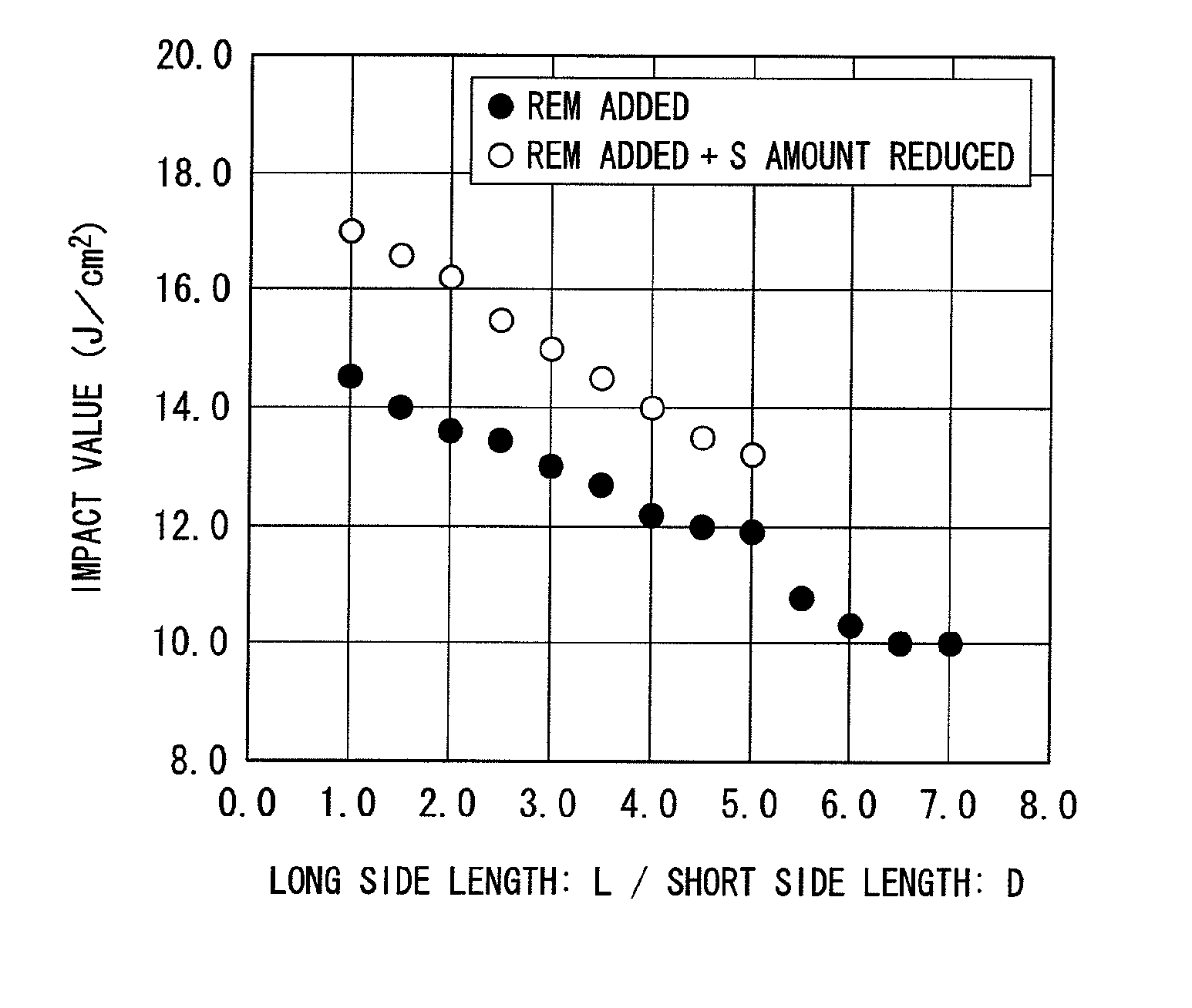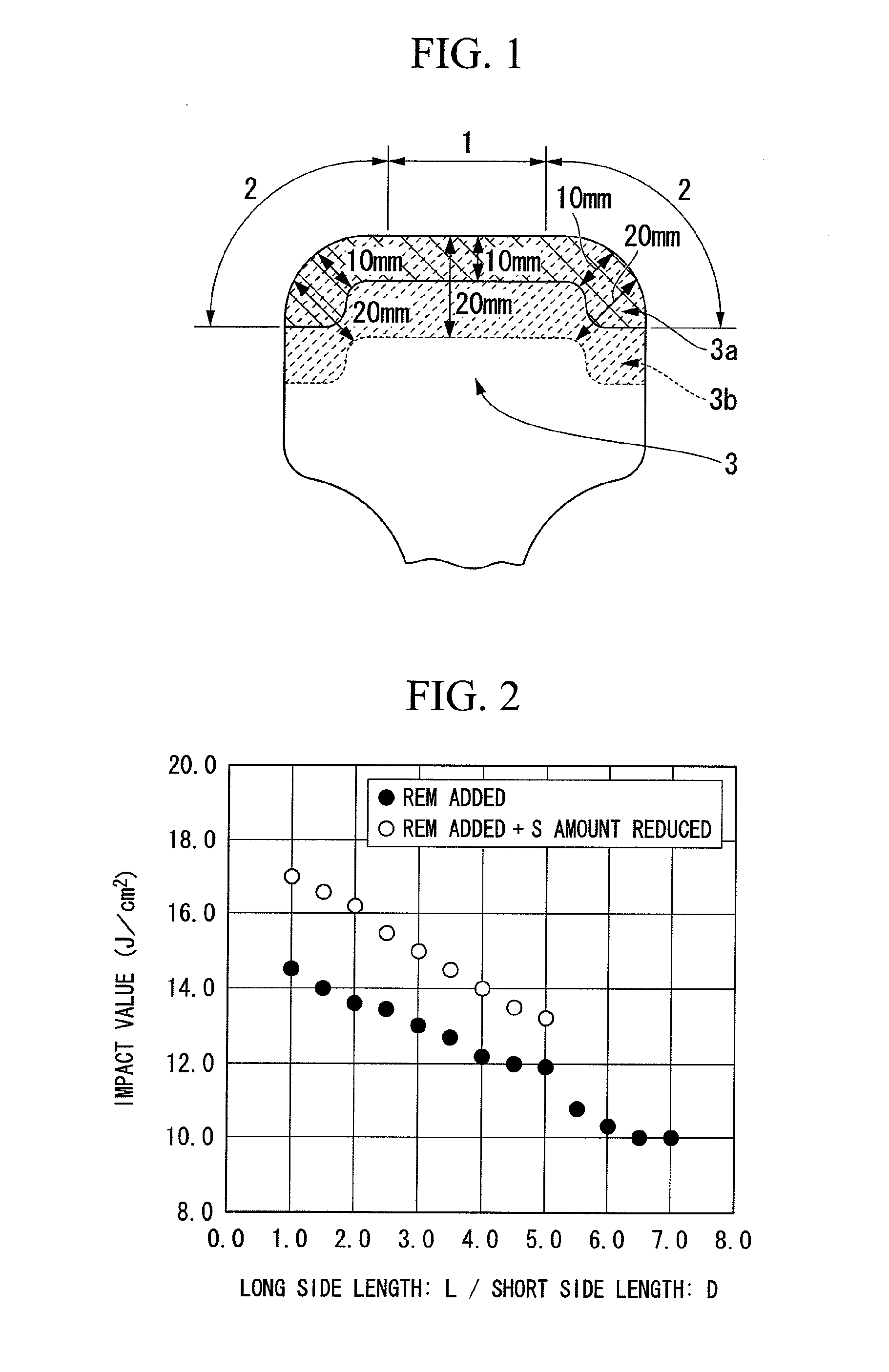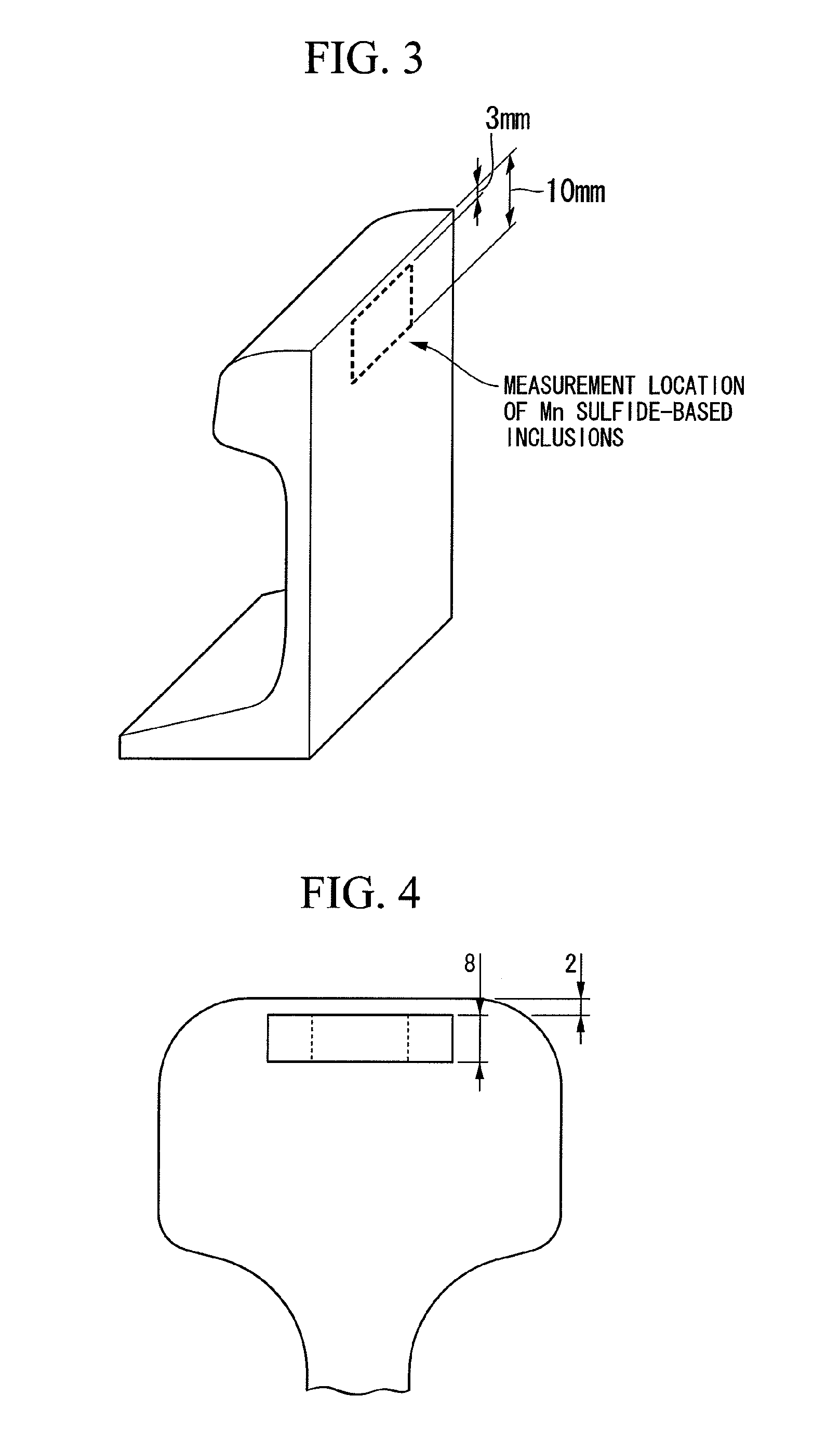Pearlitic rail with excellent wear resistance and toughness
a technology of applied in the field of pearlitic rails, can solve the problems of insufficient refinement of austenite grains, limited reduction of rolling temperature and rolling reduction rate, and remarkably severe track environment, so as to improve the usable period (service life) of the rail, improve the and improve the wear resistance and toughness of the pearlite structur
- Summary
- Abstract
- Description
- Claims
- Application Information
AI Technical Summary
Benefits of technology
Problems solved by technology
Method used
Image
Examples
examples
[0142]Next, examples of the present invention will be described. Tables 1 to 3 show the chemical components of rail steels for tests (rail steels of the invention and rail steels of comparative examples)).
[0143]Meanwhile, in Tables, the chemical components #1 include the balance being iron and inevitable impurities. In addition, in Tables 1 and 2, the chemical components of which the amounts of S are not shown included S at contents in a range of more than 0.0100% to 0.0200%.
[0144]Rail steels having the component compositions shown in Tables 1 to 3 were manufactured in the following manner.
[0145]Melting was conducted with a commonly used melting furnace such as a converter furnace, an electric furnace or the like. As REM, mischmetal containing Ce, La, Pr, and Nd as the main components was added to molten metals, and oxysulfides of REM (REM2O2S) were uniformly dispersed so as to control the distribution of Mn sulfide-based inclusions. Thereafter, steel ingots were manufactured by an ...
PUM
| Property | Measurement | Unit |
|---|---|---|
| side lengths | aaaaa | aaaaa |
| percent by mass | aaaaa | aaaaa |
| depth | aaaaa | aaaaa |
Abstract
Description
Claims
Application Information
 Login to View More
Login to View More - R&D
- Intellectual Property
- Life Sciences
- Materials
- Tech Scout
- Unparalleled Data Quality
- Higher Quality Content
- 60% Fewer Hallucinations
Browse by: Latest US Patents, China's latest patents, Technical Efficacy Thesaurus, Application Domain, Technology Topic, Popular Technical Reports.
© 2025 PatSnap. All rights reserved.Legal|Privacy policy|Modern Slavery Act Transparency Statement|Sitemap|About US| Contact US: help@patsnap.com



